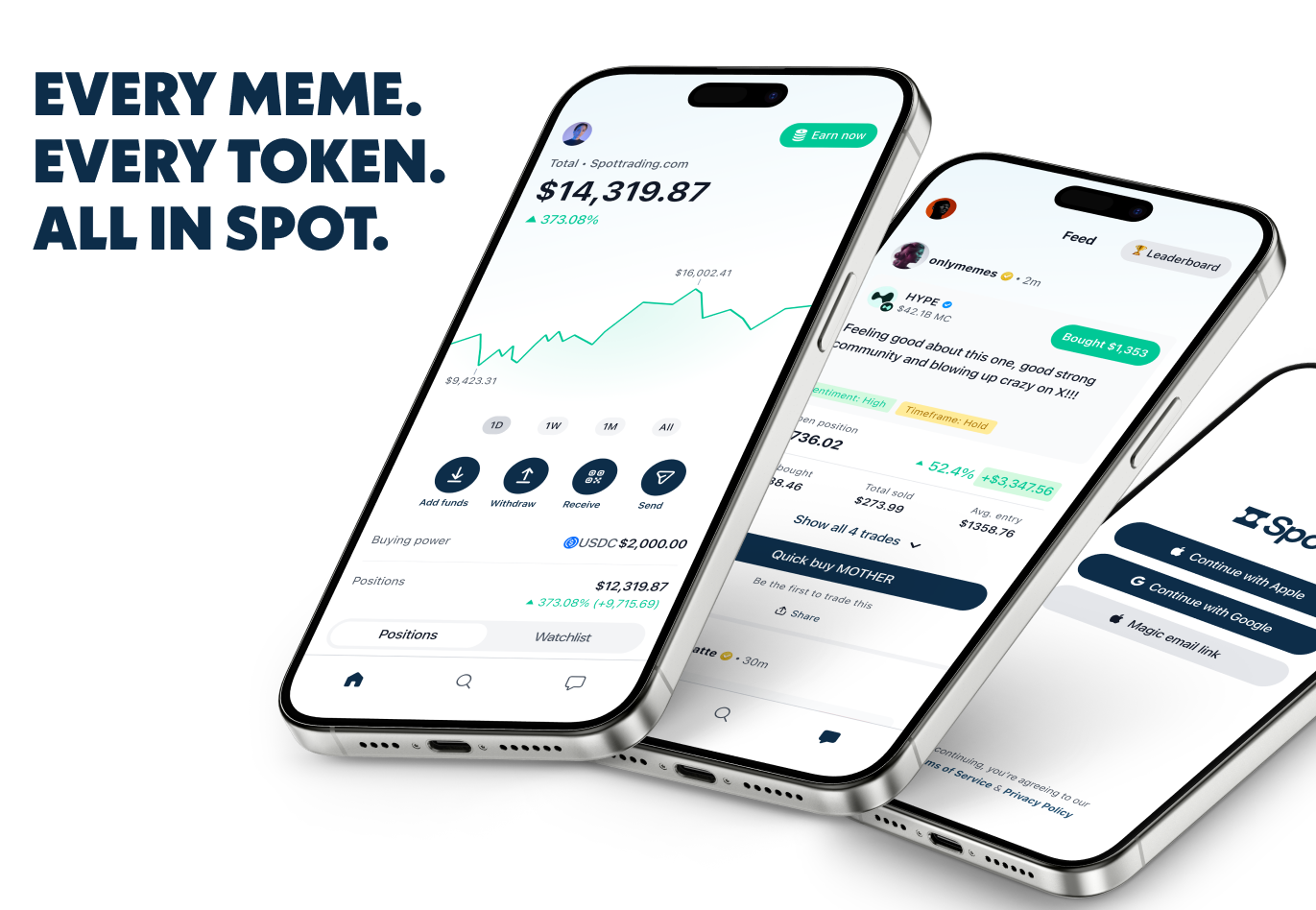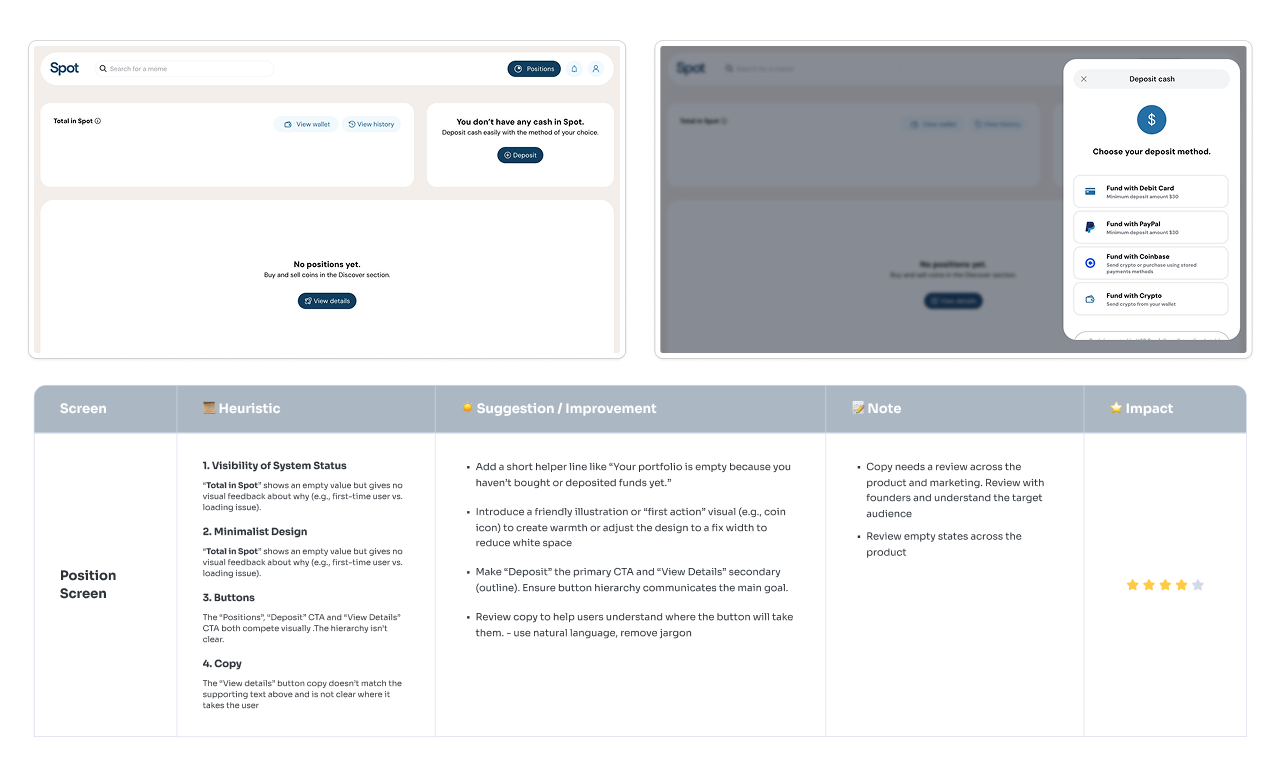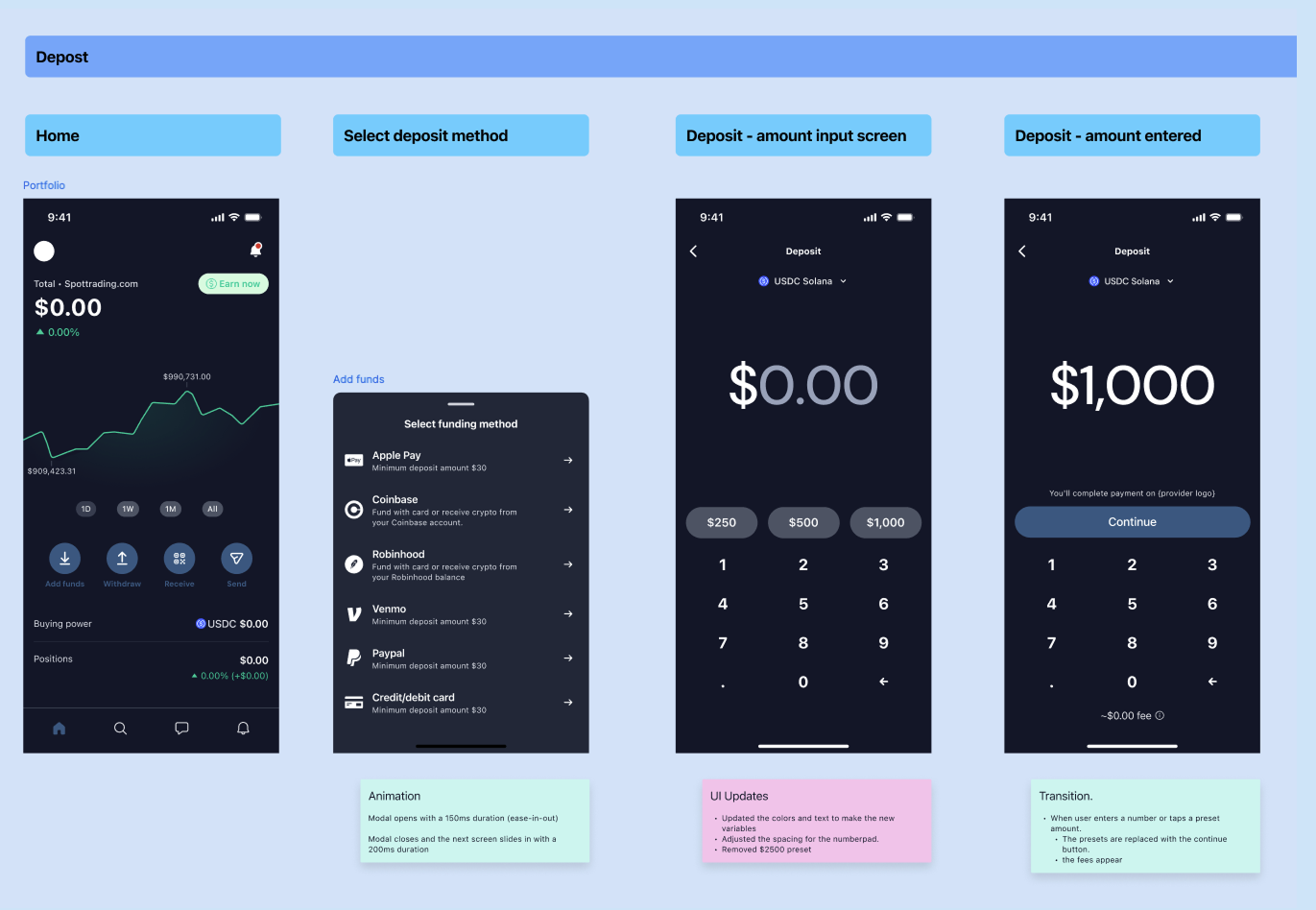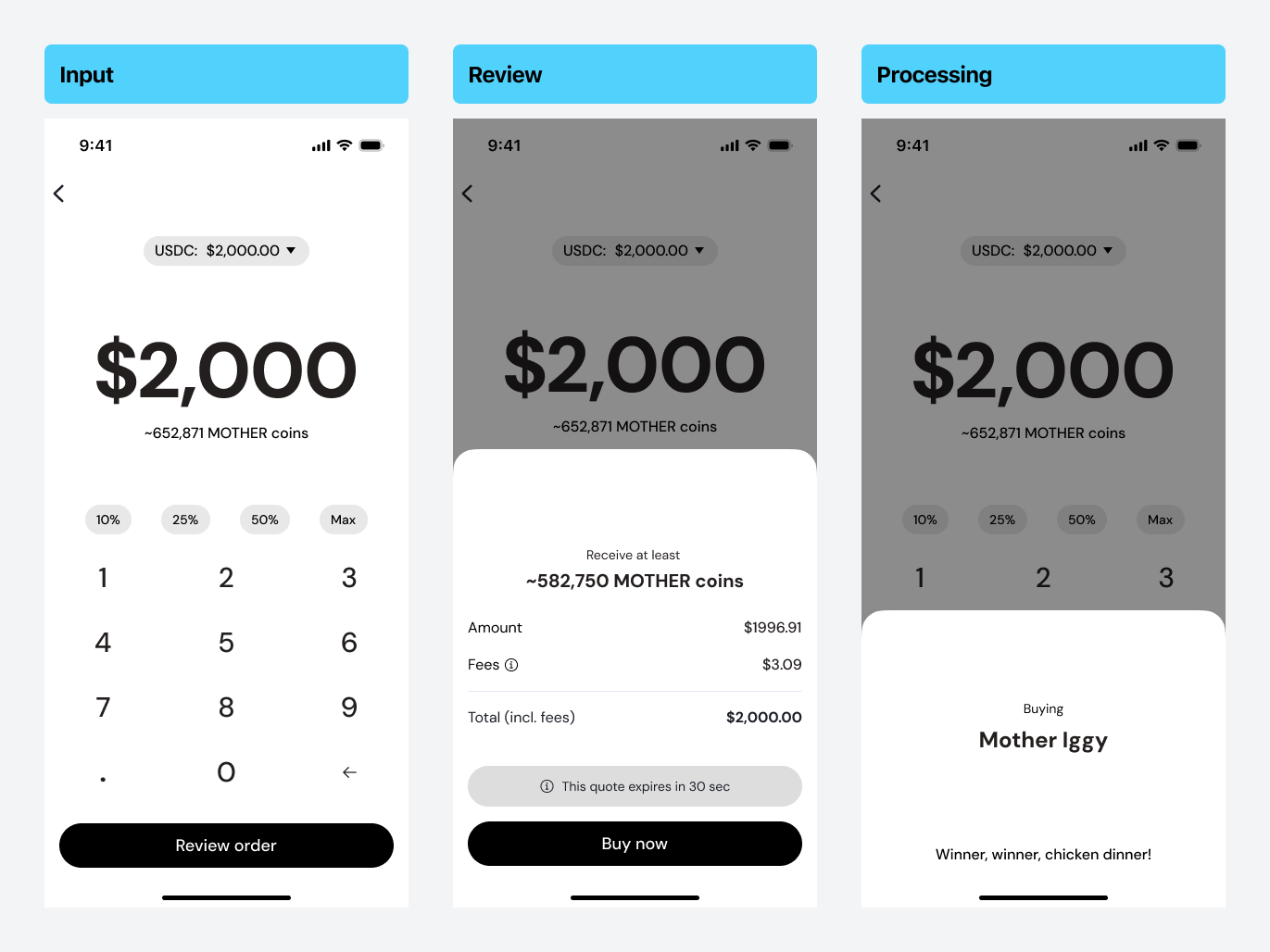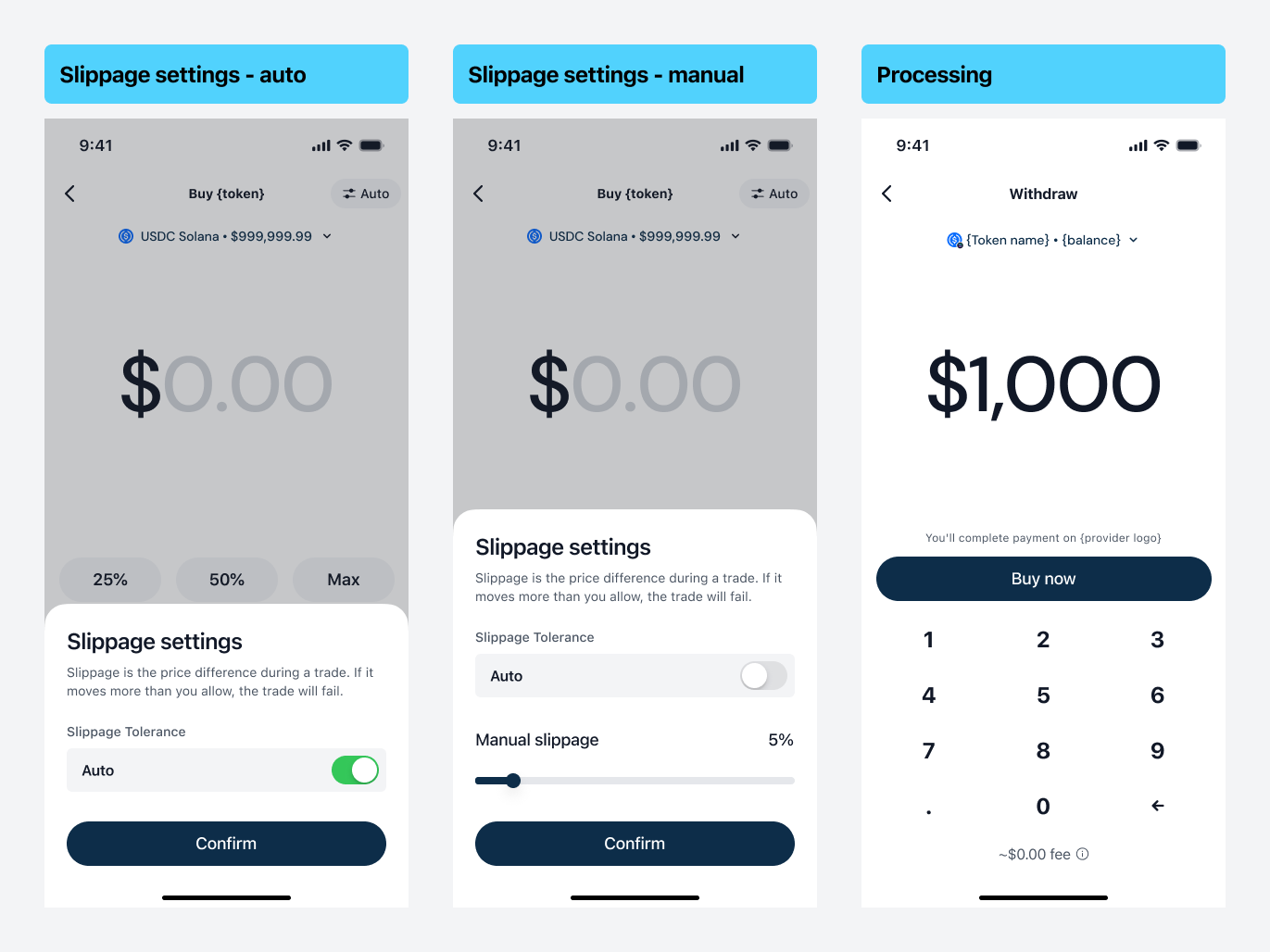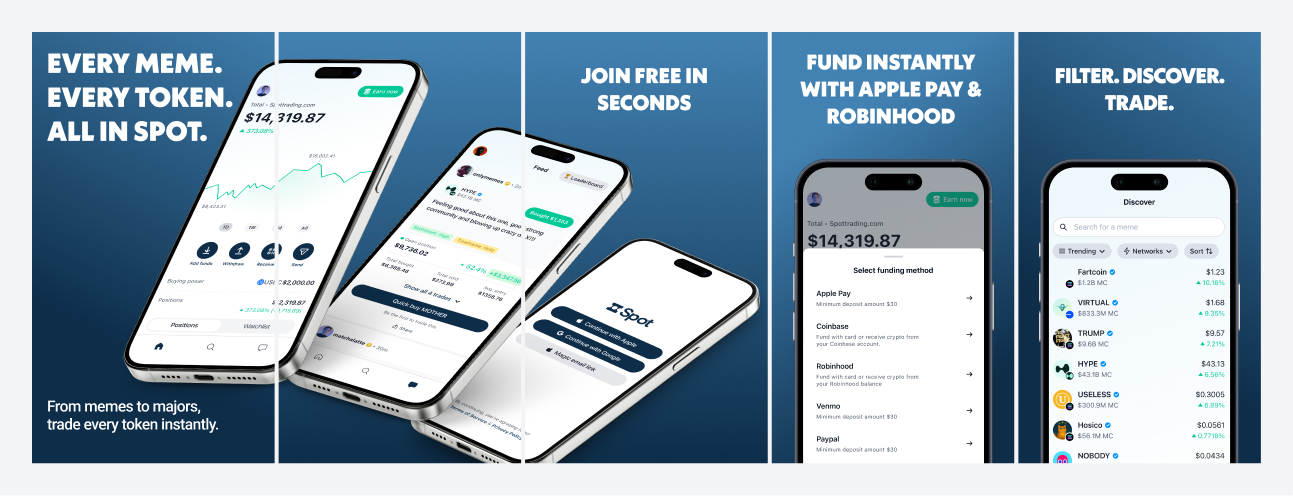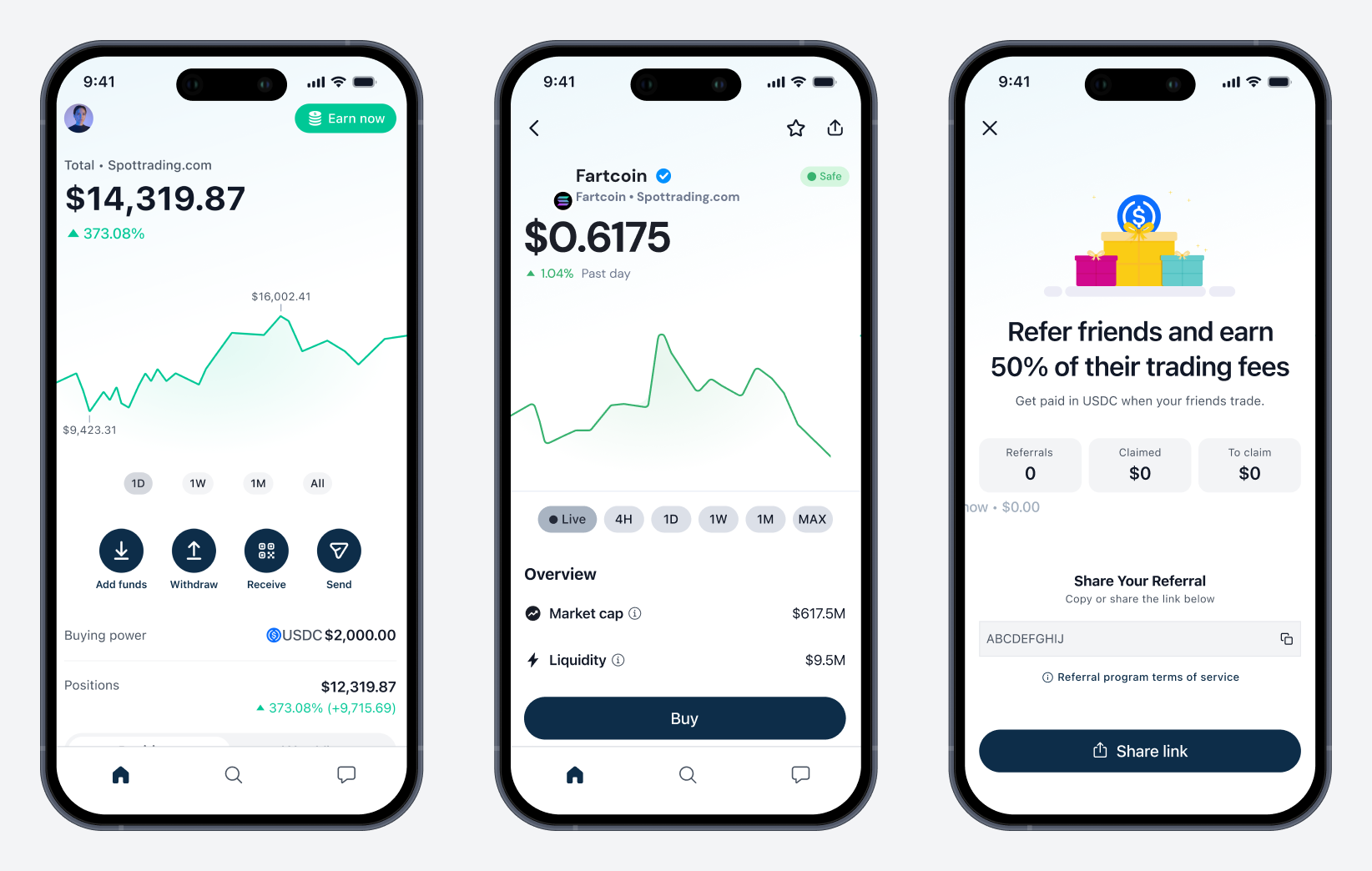Spot
Role: Founding / Lead Product Designer — iOS, Android (RN) & Web
Designed for everyday traders who want to buy meme coins as easily as a stock.
2024 — 2025
TL;DR
I led Spot from internal beta to launch. I fixed wobbly flows, cleaned up an off-the-shelf design system so it matched the real product, and worked closely with PM and engineering. Big wins: a slippage control that cut failed trades from 72% → 26%, a faster confirmation step (trade time ↓ ~36%, completion ↑ ~18pp), and a 16-week React Native rebuild that brought Android to parity using shared logic and simple tokens.
The Context — Lots of Interest, Hard to Use
Meme-coin trading was exploding — communities could move markets overnight. But for most people, getting started wasn’t easy. Unlike Coinbase or Binance, you couldn’t buy in a few taps. A typical path looked like: deposit USD → convert to USDC → make sure both assets are on the same blockchain before you can buy. People wanted in, but the process felt fragile, confusing, and risky.
“Keep crypto’s transparency. Make the experience as simple as buying a stock.”
Principles — Speed, Clarity, Trust
A simple framework I used to keep design decisions consistent — not fixed rules, but a compass that helped the team move quickly without losing clarity.
- Speed ⚡ — less friction; quicker actions.
- Clarity 👁️ — screens explain themselves; no jargon.
- Trust 🛡️ — honest states and predictable behaviour.
Not every call fits perfectly — the goal was to be intentional about trade-offs.
Start by Seeing the Whole Journey
What I found
A strong core with rough edges: duplicated patterns, mixed typography, unclear errors, and flows that didn’t match what shipped.
What I changed
I mapped every screen and flow, from onboarding to trading. We prioritised issues by impact vs. effort and turned them into a shared to-do list. I also ran a FigJam session so the team could agree on what to fix first.
Clean Up the System, Don’t Rebuild It
The issue
The design library mixed a bought-in kit with custom work — and lots we never used. Names didn’t match the code. Tokens weren’t consistent.
What I did
- Removed unused and overlapping parts; rebuilt only what we actually shipped.
- Simplified tokens (colour, spacing, type) and matched them to Tailwind.
- Wrote clear behaviour for states like loading, error, and disabled.
- Checked details with engineers on iOS and Android to make sure it felt right.
“Not glamorous work — but it made releases predictable and faster.”
How We Worked Together
We designed and built in parallel. I checked TestFlight/staging builds, tuned spacing and tokens on the fly, and left short, clear notes in Figma so no one was blocked across time zones. Tools we used: Figma branches for experiments, TestFlight for checking real interactions, and a simple tracker for what to test next.
“Async only works when files explain themselves — short notes beat long docs.”
Key Project — Buy Flow & Slippage
The problem
When we looked at the numbers, about 72% of buy attempts failed — usually because prices moved too quickly or there wasn’t enough liquidity. The app didn’t explain what went wrong at the time, so people tapped “Buy,” saw a generic error, and lost trust.
How pros handle it
Experienced traders set a slippage limit — how much the price is allowed to move before the trade cancels. Most everyday users haven’t heard of that.
What we changed
- Slippage control: smart defaults that adjust to market swings, with an option to set it yourself.
- Live guidance: show how changes affect your chance of success.
- Plain English: “Allow small price changes so your trade goes through.”
- Faster confirm: merged review + confirm into one step; fees stayed visible but lower on the screen so people could move quickly.
The impact
- Failed trades ↓ 72% → 26%
- Average trade time ↓ ~36%
- Completion rate ↑ ~18 percentage points
“We turned a technical idea into something anyone could understand and trust.”
Brand You Can Feel in the Product
The same color cues (success, caution, risk), voice, and layout showed up everywhere — app screens, website, emails, and social. I worked with an external website designer and a small marketing team (social + short video) so it all felt like one product.
“From a tweet to a trade, it should feel like the same brand.”
Results
- Better trading: failed trades ↓ 72% → 26%; trade time ↓ ~36%; completion ↑ ~18%.
- iOS + Android parity: React Native rebuild in 16 weeks using shared logic and simple tokens.
- Faster releases: a leaner system cut back-and-forth and made builds more predictable.
- Consistent feel: product and brand spoke the same language everywhere.
Reflection
Spot taught me how to keep things simple under pressure. Clean up what you have, write things clearly, and work tightly with engineering. Good systems don’t slow teams down — they help everyone move faster with fewer surprises.
